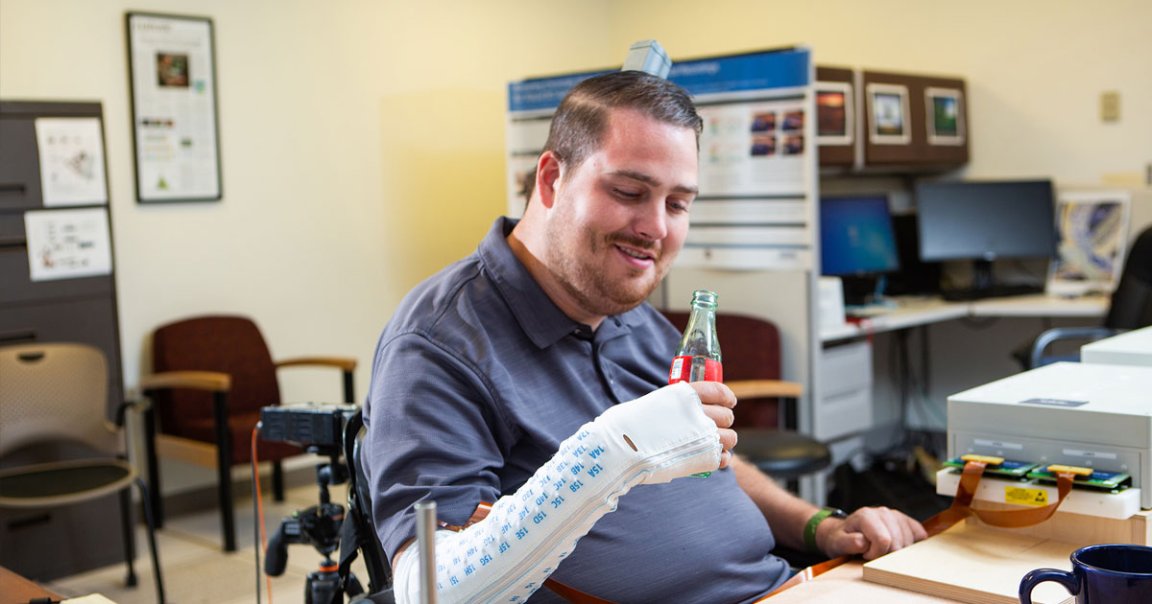
A cutting-edge implant has allowed a man to feel and move his hand again after a spinal cord injury left him partially paralyzed, Wired reports.
According to a press release, it’s the first time both motor function and sense of touch have been restored using a brain-computer interface (BCI), as described in a paper published in the journal Cell.
After severing his spinal cord a decade ago, Ian Burkhart had a BCI developed by researchers at Battelle, a private nonprofit specializing in medical tech, implanted in his brain in 2014.
The injury completely disconnected the electrical signals going from Burkhart’s brain to his hands, through the spinal cord. But the researchers figured they could skip the spinal cord to hook up Burkhart’s primary motor cortex to his hands through a relay.
A port in the back of his skull sends signals to a computer. Special software decodes the signals and splits them between signals corresponding to motion and touch respectively. Both of these signals are then sent out to a sleeve of electrodes around Burkhart’s forearm.
But making sense of these signals is extremely difficult.
“We’re separating thoughts that are occurring almost simultaneously and are related to movements and sub-perceptual touch, which is a big challenge,” lead researcher at Battelle Patrick Ganzer told Wired.
The team saw some early successes regarding movement — the initial goal of the BCI — allowing Burkhart to press buttons along the neck of a “Guitar Hero” controller.
But returning touch to his hand was a much more daunting task. By using a simple vibration device or “wearable haptic system,” Burkhart was able to tell if he was touching an object or not without seeing it.
“It’s definitely strange,” Burkhart told Wired. “It’s still not normal, but it’s definitely much better than not having any sensory information going back to my body.”
READ MORE: A Brain Implant Restored This Man’s Motion and Sense of Touch [Wired]
More on BCIs: NEW BRAIN IMPLANT COULD TRANSLATE PARALYZED PEOPLE’S THOUGHTS INTO SPEECH